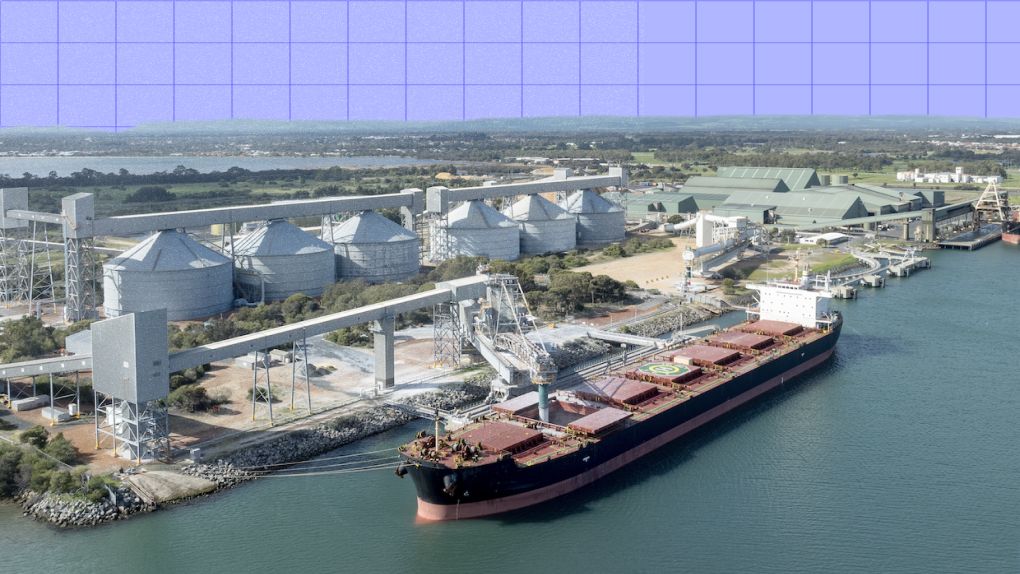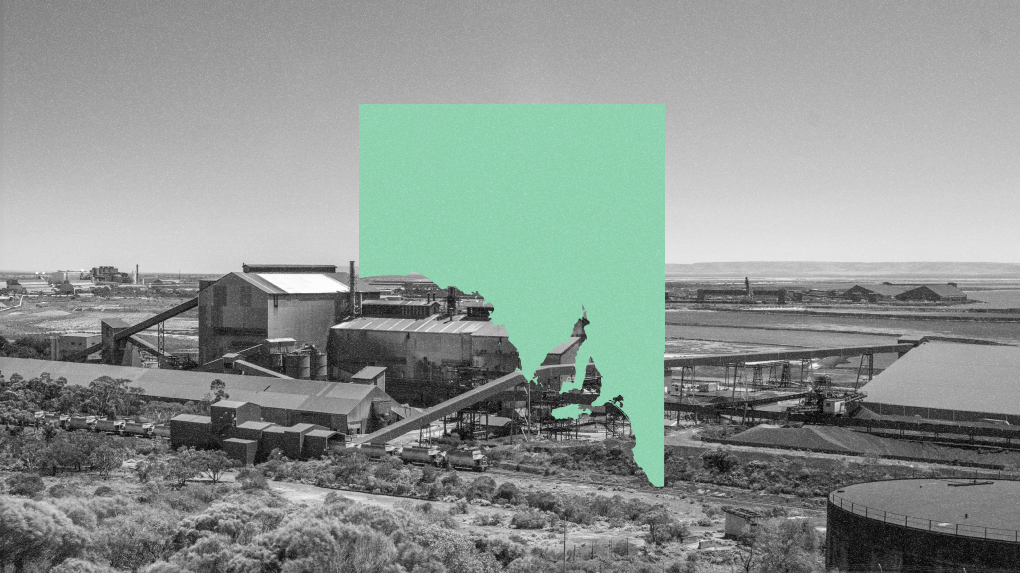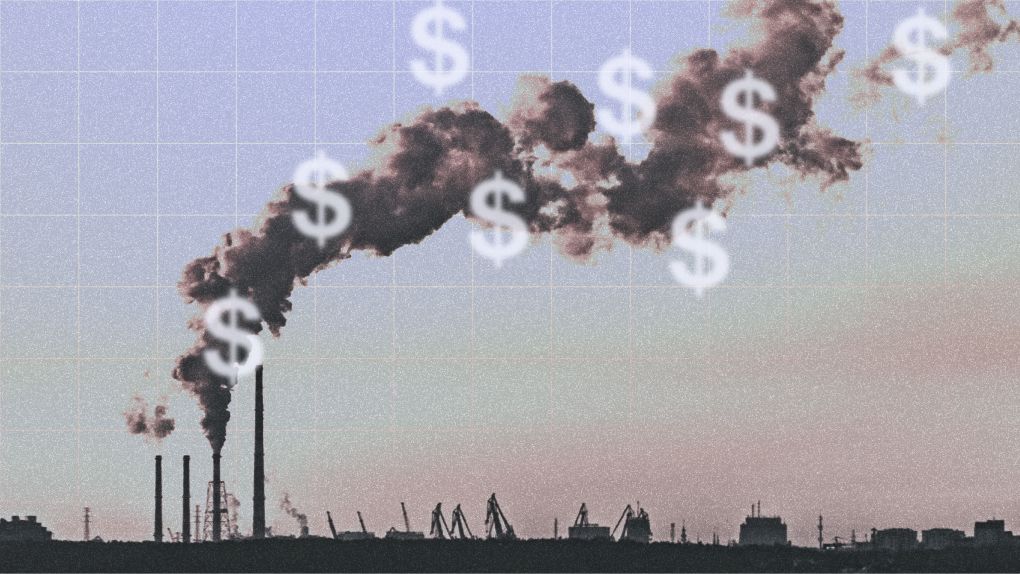Thanks for the invitation to speak today. This conference is so timely as Australia continues to grapple with its role in the net zero economy.
Australia has a huge potential role to play as a supplier of green energy intensive exports, which will also meet a range of product security needs locally. Just as Australia has played an essential role in the fossil fuel economy, being the largest exporter of coal and gas combined, we must also play an essential role in the net zero economy.
The good news for Australia is that as fossil fuel exports decline, and we do not know what the trajectory of this will be, green energy intensive exports can more than take their place. One can seamlessly replace the other; the forces for the decline in fossil fuel consumption are the same as the forces which will drive the growth of green energy intensive exports.
My argument today is that one of the first places to start on Australia’s journey of being a major exporter of green energy intensive exports is in producing green shipping fuel. Other countries are moving, and it is vital for Australia and the world that we play our appropriate role both for the sake of our economy, and to give the world the lowest cost emission reduction.
In November 2024 The Superpower Institute (TSI) released its New Energy Trade report which, among many other things, identified that the component of shipping which could be decarbonised using green fuels accounts for 1.8% of global emissions.
If Australia’s market share of the green shipping fuel trade was 25% this would result in a mitigation contribution of 0.4% of global emissions with an export revenue potential of around $43 billion.
"transport fuels that can be replaced by green fuels represents over 8% of total emissions and that Australia’s share could contribute to reducing world emissions by around 2%"
The 0.4% contribution is from shipping alone. The New Energy Trade estimates that all transport fuels that can be replaced by green fuels represents over 8% of total emissions and that Australia’s share could contribute to reducing world emissions by around 2%. Compare this to the 1% contribution to the reduction in world emissions that is gained from decarbonising Australia’s entire domestic economy.
Today I will explain the following:
- In the net zero world the economics of making a range of products flip. The laws of comparative advantage require that Australia moves up the value chain in a number of areas, including making shipping fuel
- Australia needs to play its key role in the world moving to net zero by producing products that can reduce world emissions by close to 10%
- Government needs to pave the way by acting in at least 3 policy areas; Australia will fail comprehensively if progress is simply left to industry or consumers
- One of the first cabs off the rank should be green shipping fuel due to the foresight of the International Maritime Organisation (IMO)
- Mr Trump may assist more than he hinders our progress.
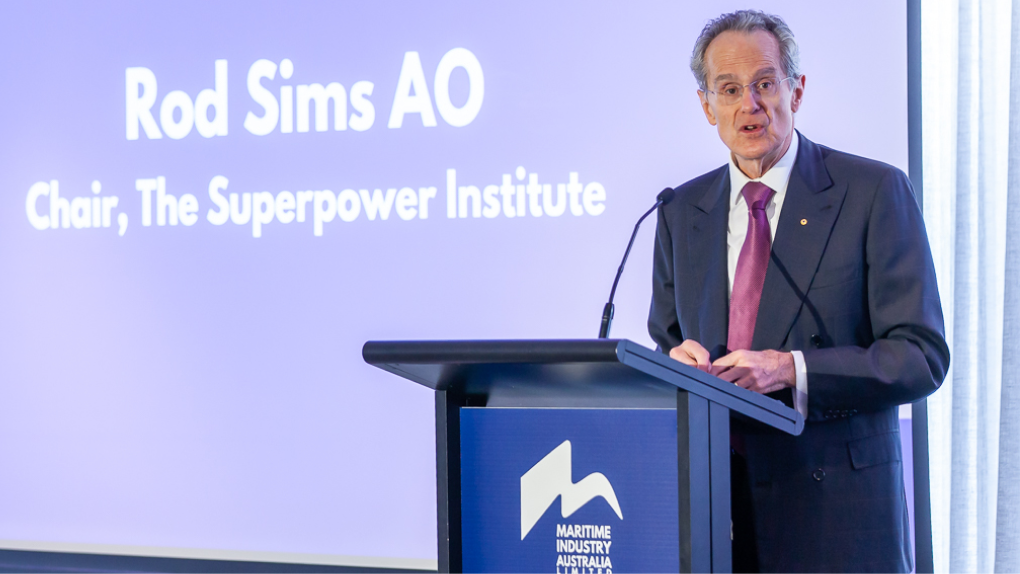
1. In the net zero world the economics of making a range of products flip. The laws of comparative advantage require that Australia moves up the value chain in a number of areas, including making shipping fuel
We have a confused debate about whether we should make more things in Australia. Sometimes you could be forgiven for thinking that the wider the range of products that we make in Australia the better.
But we know from basic trade economics that we should focus on producing products where we have a comparative advantage in doing so. To do otherwise is to make products that we should be importing, with the need to constantly protect these industries from imports. And to do otherwise is to see higher prices for consumers, and to see lower wages for workers as the industry continually struggles.
In the Treasury produced Public Interest Framework for the Future Made in Australia (FMIA) policy, published with the 2024 Budget, Treasury felt that the only projects that should proceed under the FMIA policy were ones where Australia had or was extremely likely to have a comparative advantage and, rarely, for security of supply reasons, arguments for which need to be treated with great scepticism.
As a prominent example of what I am saying here, I have heard some politicians say that we should be making much more iron and steel in Australia. After all, we have the iron ore, the coking coal needed to reduce the iron ore into iron metal, and the thermal coal or gas to provide the energy. Why export all this only to see iron and steel made in northeast Asia?
The answer is straightforward. Iron ore, coal and gas are inexpensive to export, and northeast Asia can provide a scale and so cost of production we cannot match.
In the net zero world, however, the economics flip. Green iron will need renewable energy both as an energy source and to make green hydrogen, the latter usually needed to take the place of coking coal to reduce iron ore to iron metal. But renewable energy and hydrogen are very expensive to export. Whereas coking coal adds only around 10% to the cost when exported, hydrogen adds at least 100%.
All studies I have seen suggest that Australia should be a major producer of green iron. I do not remember seeing analysis that suggests Australia should be a major producer of iron in the fossil fuel world.
2. Australia needs to play its key role in the world moving to net zero by producing products that can reduce world emissions by close to 10%
The New Energy Trade Report, written by TSI’s Reuben Finighan, fleshing out the thesis of Ross Garnaut in his Superpower books, estimated that Australia should produce energy intensive green exports that could reduce world emissions by up to 10%. Australia should be a green energy superpower because we have an almost endless supply of low cost solar and wind, and only a small population. Look at world heat and wind maps. Our wind and energy resources are terrific, with capacity factors, or availability, better than almost all other countries.
The conclusion that we can produce products that can reduce world emissions by up to 10% was drawn after assessing the low cost sources of emission free energy in China, Japan, Korea, India and Germany and comparing this to the demand they would have for low cost green energy to run their current economies. These countries all have a shortage of low cost energy; we have a huge surplus relative to our local needs.
Energy trade has always been fundamental for many countries. Where would Japan be industrially if it did not import coal and gas? Likewise, in a net zero economy Japan will need to import more processed goods with the energy intensity embedded in them. Thus, the scope for a new energy trade.
Australia should be a significant exporter of green iron, aluminium, polysilicon, urea and transport fuels, including shipping fuel.
3. Government needs to pave the way by acting in at least 3 policy areas; we will fail if progress is simply left to industry or consumers
There is much talk of wanting consumers to demand more green products, and for industry to make them. But the barriers to Australia realising our superpower potential do not lie with consumers and industry; to focus there is a dead end that will delay progress. Government policies must lead this effort.
Alternatively put, I hear people say that the problem with making green products is that they cost more. Well of course they do if you ignore the economics of climate change.
We would not have a problem in making the energy transition if green products were cheaper than those produced by fossil fuels. But for the moment they are not. Governments have, however, largely uniformly said that fossil fuels are doing serious harm to our environment and may soon irreparably damage our planet.
Use of fossil fuels are, in economic terms, accompanied by a negative externality. Not addressing this is a market failure; markets will not work as they should.
We cannot move away from fossil fuels unless governments ban the use of fossil fuels or put a price on this negative externality. The former is unlikely so if governments are serious about reducing carbon emissions they must put a price on carbon. Indeed, this is the way a market economy works. Price the obvious externality and let the market lead the outcome.
Not to do this, and then to complain that green products are too expensive, is illogical. If fossil fuels are paying a carbon price to cover the damage they do to our environment then green products will often be cheaper. Alternatively put, green products will be commercial if they compete on a level playing field.
TSI’s report, A Green Iron Plan for Australia, with Ingrid Burfurd as the lead author, provides analysis of the economics of green iron production in Australia. Using detailed modelling it concludes that green iron production in Australia can compete with fossil fuel produced iron in the best locations when applying the European carbon price to fossil fuel production.
The Green Iron Plan for Australia makes a number of recommendations to address the market failures which, left unaddressed, will see resources allocated incorrectly. These recommendations are as follows.
(i) The need for the Government to at least initially compensate for the current lack of a world price on carbon to get Australia on the green iron ladder of opportunity.
(ii) Provide up-front innovation grants of 15-30% of the capital cost of the green iron production facility, depending on the technology, to allow for the painful lessons that will be learnt by a few early movers which will be a cost to the first movers but advantage later players.
(iii) Government should have a role in providing common user infrastructure which will be under provided if left to the market where players will provide for their own use rather than for others who will follow.
Other steps are needed of course, such as greatly reducing the time for project approvals or rejections, which currently makes Australia an unattractive place to invest. Australia as a nation has become too complacent.
The policy needs of other products will be similar, but the key issue is compensating for the lack of a carbon price.
This is where the case for Australia pursuing the production of green shipping fuels is now so strong given the actions of the IMO.
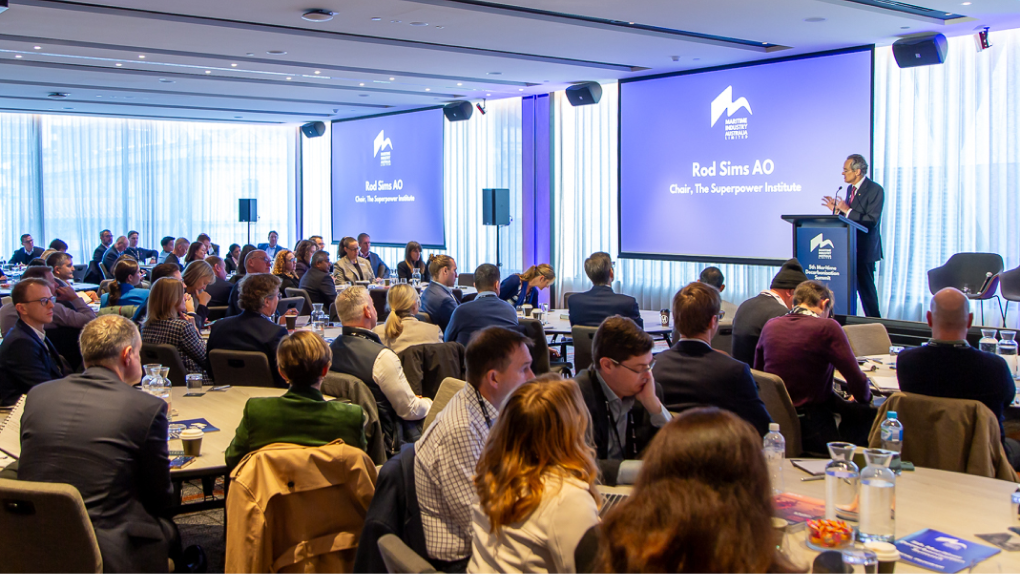
4. One of the first cabs off the rank will be green shipping fuel due to the foresight of the International Maritime Organisation (IMO)
(a) The technology.
As you know, some inland and short sea shipping can be powered by batteries. Long-distance or “deep sea” shipping, however, requires some form of green fuel.
This audience will be familiar with the technology, but there are some important points to make.
Renewable diesel results in properties nearly identical to the petroleum-based fuel, making it a ‘drop in’ fuel suitable for use in existing engines and infrastructure without modification.
The most common feedstock to make renewable diesel is used cooking oil (UCO), which illustrates some challenges of biofuels. The supply of UCO is constrained, which limits scalability. Alternative feedstocks are vegetable oils such as canola and soybean, which can create land use and food pricing conflicts. In terms of policy, the EU generally does not recognise vegetable oil feedstocks as sustainable, but the US does.
The technology to produce renewable diesel has been fully commercialised, but without a green premium mechanism such as carbon pricing the current levelised cost is 50-100% above petroleum-based diesel.
The main other option is renewable methanol (CH3OH) which can be produced via several low-carbon pathways which require sources of sustainable carbon and green hydrogen.
Bio-methanol is produced using biomass from carbon neutral feedstocks such as agricultural residues or forestry waste, which is gasified to produce syngas (a mixture of hydrogen and carbon monoxide), and the syngas is catalytically converted into methanol. This process is well established and has been implemented in various projects worldwide.
e-Methanol is synthesised through a power-to-liquid process in which CO₂, captured from sources such as biogas, industrial emissions or direct air capture, is combined with green hydrogen and undergoes a catalytic reaction to form methanol. This technology is less mature, but has reached a commercial demonstration scale such as with the Kasse plant in Denmark.
Methanol has, however, a lower energy density compared to fossil marine fuels, so methanol powered ships need a larger fuel tank or more frequent refuelling, which can increase costs. Compared to conventional marine fuels, renewable methanol cuts carbon dioxide emissions by up to 95%, reduces nitrogen oxide emissions by up to 80%, and completely eliminates sulphur oxide and particulate matter emissions, significantly improving air quality.
It is worth a brief word on hydrogen because it is much maligned by people who misunderstand its role. The best use of hydrogen will not be as an energy source, indeed you need energy to make it, and it is difficult and costly to export. Hydrogen is needed for its chemical properties as an input to make green shipping fuel, green iron and other green products. It is a vital input of production, and so demand for it will depend on demand for production of the final product, in this case green shipping fuel.
(b) Progress towards green shipping fuel.
The global green fuels industry is experiencing growth, driven by increasing demand from the maritime sector to meet its 2050 net-zero emissions commitment.
The European Union has enacted two pivotal regulations to decarbonise maritime transport: the inclusion of shipping in the EU Emissions Trading System (EU ETS) and the implementation of the FuelEU Maritime Regulation.
In the US the 2022 Inflation Reduction Act created strong incentives for low-carbon fuels via the clean fuel production tax credits and clean hydrogen credits. This triggered massive investment in renewable diesel, sustainable aviation fuel, e-methanol, and green hydrogen projects. However, with the passage of Mr Trump’s “Big Beautiful Bill” through the house, major companies are reassessing or cancelling billions of dollars of green hydrogen and green fuel projects in response to the potential repeal or reduction of these tax credits.
The vital turning point, however, came in April 2025 with the International Maritime Organisation (IMO) approving its draft net-zero regulations for the international shipping sector. The IMO Net-zero Framework needs to be formally adopted in October this year and will then come into force in 2027. It covers ocean going vessels over 5,000 gross tonnage, which account for approximately 85% of international shipping emissions.
The IMO Net-zero Framework is the first in the world to combine mandatory emissions limits and carbon pricing across an entire industry sector. This represents the first global sectoral price on carbon, an amazing milestone of which the shipping industry should feel proud.
This framework combines mandatory emissions limits and greenhouse gas pricing, establishing what will be a legally binding framework. The global fuel standard stipulates ships must reduce, over time, their annual greenhouse gas fuel intensity calculated using a well-to-wake approach. Ships emitting above the threshold will have to acquire remedial units to balance its deficit emissions, while those using zero or near-zero GHG technologies will be eligible for financial rewards.
Companies such as Maersk pioneered investing in methanol-powered vessels to meet decarbonisation goals, resulting in methanol's emergence as the leading alternative marine fuel. As of early 2025, over 260 methanol-fuelled newbuild vessels are currently on order worldwide.
According to Green Energy Analytics as of May 2025 there are over 240 renewable and low carbon methanol projects worldwide with a combined projected capacity of 48.8million metric tons by 2030. These projects cover both e-methanol and bio-methanol production and reflect a growing commitment to renewable methanol as a sustainable fuel source. How many projects get up is, of course, always difficult to predict, but Australia is falling behind.
In Australia, the Bell Bay Powerfuels project in northern Tasmania is capitalising on this demand, targeting production of 300,000 tonnes a year of renewable methanol for the shipping industry, beginning in 2028. An electrolyser, powered entirely by renewable energy sources (hydro and wind), will split water into hydrogen and oxygen. Co-located with the forestry industry, the carbon source is forestry residue, which will be gasified to produce syngas, and then combined with the hydrogen to produce renewable methanol.
This Tasmanian project is the most advanced of the Superpower industries to proceed in Australia. So Australia will hopefully soon make a start but much more is needed if we are to achieve our green fuel potential.
(c) The role of Government.
The policy framework mentioned in Section 3 above is required. But the most difficult piece will soon be in place with the IMO’s effective carbon price and the $2kg hydrogen production credit from the government. This is an amazing start that no other sector in the world has. There is, therefore, so much to build on.
From Section 3, the following also needs to happen.
First, the 15-30% innovation capital grants should be introduced for the early movers using particular technology so that they are compensated for the costly learnings others will benefit from.
Second, the Government should stand ready to provide common user infrastructure in areas where many projects are likely.
And finally, facilitation of these projects needs to be rapid.
But these are modest asks given the great start the IMO framework provides.
(d) Australia as a key source of biomass.
I have already mentioned Australia’s comparative advantage in making green energy and hydrogen given our amazing wind and solar resources. What is under-appreciated is Australia’s comparative advantage in biomass.
The majority of carbon feedstocks to produce all the green shipping fuel the world needs will need to come from sustainable biomass. Biomass is important for maritime decarbonisation as a source of renewable CO2, which is crucial to the production of green methanol. To be sustainable, biomass must be replaced with comparable stock after harvest, so that it is carbon neutral, and must not degrade land or significantly raise global food prices.
Carbon may also be sourced via carbon capture applied to fossil fuel combustion or other CO2-generating processes such as cement. However, while recycling of CO2 is preferable to the consumption of additional fossil fuels, it still results in release of CO2 into the atmosphere and is inconsistent with net zero. Municipal waste may be carbon neutral, but plastic combustion results in greatly accelerated release of locked up carbon. It is, in any case, a minor carbon source. Direct Air Capture may play a role in the distant future, but it is exceptionally expensive and at the beginning of a long development pathway.
Australia’s enormous biomass crop potential lies in the planting and harvesting of trees and crops in the mallee country of southern Australia and Western Australia, the rangelands around the north of Capricorn, and the mulga country in the mid-latitudes of eastern Australia. These are marginal lands that are unsuited to agricultural crop production, hence would minimally impact Australia’s agricultural output.
The productivity of mallee species such as eucalyptus polybractea is estimated at around 5.4 tonnes per hectare per year on marginal land. Biomass crops such as miscanthus have similar attributes and requirements to sugarcane, which is grown at scale in Queensland, but can be grown in marginal areas across Australia with little or no irrigation. A large part of northern Australia appears suited to growing miscanthus. Another promising plant is agave tequilana, which may produce up to 14.4 tonnes of carbon per hectare per year in semi-arid environments.
As shown in the New Energy Trade using around 5 percent of Australia’s land to farm carbon, around 38.5 million hectares, at an average rate of 8 tonnes of carbon per hectare would allow production of around 308 million tonnes of carbon. This is around 30 percent of the carbon feedstock required globally in 2060 to meet all the world’s sustainable carbon needs which will be particularly large in industries such as plastics.
The key point here is that Australia is extremely well placed to provide the biomass needed to produce renewable shipping fuels at scale.
With our advantages in producing green energy, green hydrogen and sustainable biomass Australia is in a superb position to dominate the production of green shipping fuel.
Research on the extent and efficient use of this potential is of major importance for global decarbonisation as well as Australian rural and provincial development.
5. Mr Trump may assist more than he hinders our progress.
As with many policies around the world today the question is what about the policies of Mr Trump? The US withdrew in April from the IMO arrangements described above; indeed, the US delegation walked out of the IMO April meeting.
So what does this mean for the optimism just expressed?
On the plus side, the many investors who were planning to invest in green production in the US may now need to find a new home for their projects. There is considerable expectation of this occurring on many fronts. Australia is well placed to benefit.
Further, there is very little international shipping based in the US.
On the negative side, while on many policy issues very few countries will currently want to take their policy lead from the US, Mr Trump may try to coerce them in one way or another. This potential will create at a minimum some uncertainty.
On so many fronts if the world economy and climate are to function effectively the US must be ignored as much as possible and like-minded countries need to move forward collectively. There is so much at stake. The IMO’s terrific world first move must be yet another area where like-minded countries proceed without the US. The US may eventually come on board, but the world cannot wait for this to happen.
Conclusion
The IMO, in providing an effective world carbon price for shipping fuel, is providing Australia an opportunity. The question is whether we will grasp it now.
Do so and we boost Australia’s economy and productivity, and provide a hedge against declining exports of fossil fuels.
Do so and the world benefits from one of the cheapest sources of green fuels.
What will our Government now do?
Hopefully it will put in place grants for innovation from early projects, assist with infrastructure and deal with our system of embarrassingly slow project approvals.
Thank you for your time today.
Rod Sims
Chair, The Superpower Institute
Rod Sims is Enterprise Professor at the Melbourne Institute of Applied Economic and Social Research, Faculty of Business and Economics, University of Melbourne, and Chair of The Superpower Institute. He previously chaired the ACCC (2011-2022), served as Deputy Secretary (Economic) in the Department of Prime Minister and Cabinet, and Principal Economic Adviser to PM Bob Hawke (1988-1990).
